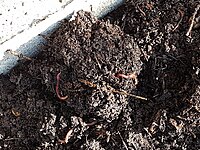
Photo from wikipedia
Plant Ecology Soil biota, including symbionts such as mycorrhizal fungi and nitrogen-fixing bacteria, as well as fungal and bacterial pathogens, affect terrestrial plant diversity and growth patterns (see the Perspective… Click to show full abstract
Plant Ecology Soil biota, including symbionts such as mycorrhizal fungi and nitrogen-fixing bacteria, as well as fungal and bacterial pathogens, affect terrestrial plant diversity and growth patterns (see the Perspective by van der Putten). Teste et al. monitored growth and survival in Australian shrubland plant species paired with soil biota from plants of the same species and from other plants that use different nutrient acquisition strategies. Plant-soil feedbacks appear to drive local plant diversity through interactions between the different types of plants and their associated soil biota. Bennett et al. studied plant-soil feedbacks in soil and seeds from 550 populations of 55 species of North American trees. Feedbacks ranged from positive to negative, depending on the type of mycorrhizal association, and were related to how densely the same species occurred in natural populations. Science , this issue p. [134][1], p. [173][2]; see also p. [181][3] [1]: /lookup/doi/10.1126/science.aal4549 [2]: /lookup/doi/10.1126/science.aai8291 [3]: /lookup/doi/10.1126/science.aai8212
Journal Title: Science
Year Published: 2017
Link to full text (if available)
Share on Social Media: Sign Up to like & get
recommendations!